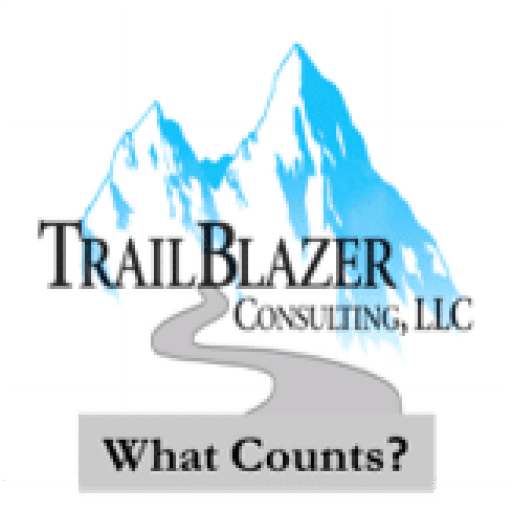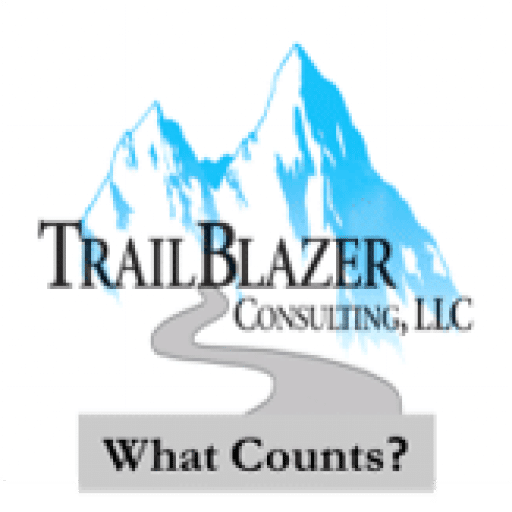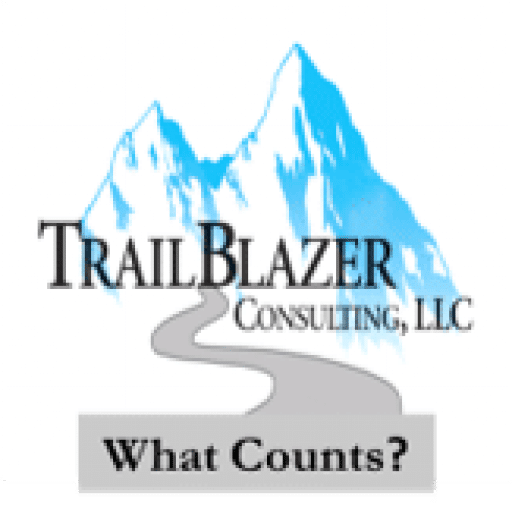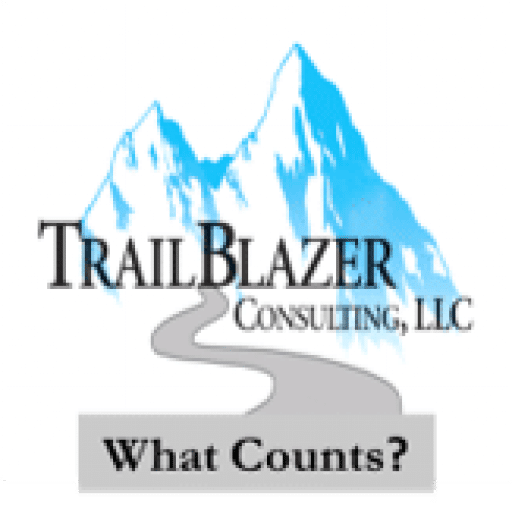Episode Transcript
[00:00:01] Speaker A: Contract lifecycle management functionality hello. Thank you for joining us. This is what counts, the podcast created by Trailblazer Consulting. Here we highlight proven solutions developed through our experience working with companies across various industries, and we talk about how you can apply these solutions to your company. We share our experience solving information management challenges like creating and implementing a records retention schedule, creating an asset data hierarchy, or helping with email management. This is Lee, and in this episode, Moore and I will talk about CLM specific functionality in order to understand the requirements that you need to collect.
[00:00:39] Speaker B: Thanks, Lee.
So in a lot of ways, requirements gathering is requirements gathering. You're talking to business users who are looking for a solution to some problem and you want to guide them through really defining what is the functionality that they need. That requirements process is similar regardless of the type of system that you are going to build. Any standard system lifecycle development process will have a way that you're supposed to gather and document requirements. So what I wanted to talk about today is what are some of the unique things about CLM functionality that are sort of industry standard and that you would be looking for in a solution? Or as you're talking to your business users, these are also good guides into how are they doing things today? What are their processes that you might be able to improve? And if you don't want to go all the way to buying a CLM tool, can you recreate some of this functionality using other tools? So taking that sort of broader brush of we're not necessarily just going to use this information to go run an RFP and buy something, it's good to understand what the functionality is of a contract lifecycle management solution. How does that sound as the start?
[00:02:02] Speaker A: It's fine. The thing that I think you were missing in the beginning with the requirements is just adding the fact that there are business related requirements, functional, and then there's technical related requirements also. I know you said we don't want to get into that, but there are two different distinctions that when you're listening to people give you feedback, you have to be able to split them apart.
[00:02:28] Speaker B: That's a good point. And yeah, you're right, the technical requirements are usually about how does this solution fit into other technology at your company. So are you a cloud based company? Are you a Microsoft shop? Are you a Google shop? How big is your footprint? How many people are involved? Those are all important things, but I do want to focus on that business functionality.
[00:02:56] Speaker A: Good.
[00:02:56] Speaker B: Perfect stage setting there.
All right, so there's two big pieces that I wanted to talk about. One is the lifecycle of a contract and functionality that follows along in the lifecycle? And the second is for a specific type of contract, kind of. What are the other data relationships or business functional relationships that impact how you can use a contract lifecycle solution? So let's start with the baseline contract lifecycle.
Typical lifecycles start with a creation step. Then there's a sort of management use active time period, and then there's an end, a close out, and that's the same for contract, for any contract. So in the creation step you have things like drafting a new contract. And do you do that fresh every time in word, or do you or some other word processor, do you do it fresh every time in your solution, or do you start to reuse documents that you've used before? You've spent a lot of time crafting some language. Maybe you paid your attorneys to write some specific clauses, you want to reuse those. And most contract lifecycle management systems include a template library or a clause library, or both, where you're able to have, this is our warranty paragraph and these are some of the variables in it, or these are some approved variations that we've gone through our legal department and got the approval. And you can actually store those in your system, manage them sort of as blocks of text and add them to any given contract. You can do it for warranty, for indemnification, for insurance requirements or various things. You can also create a whole template document. Like this is our standard non disclosure agreement, a one way non disclosure, or a mutual nondisclosure. And these are the elements of it, and they're already in your system ready to go. So you just have to fill in the name of the parties that you are working with, dates and some specifics. What does this NDA cover?
That's a really powerful tool and that takes you out of the word processing world. You can do that in a word processing way. You can create those templates, you can create those paragraphs, and you can use discipline to manage them instead of having a system that actually will do that for you. But the functionality is the same. So talking to your attorneys or your business users who are drafting contracts to understand, how do they do that today? What kind of language exists and what do you have as a starting point, and is this a valuable thing for them? So we're working now with a client where several groups are all gung ho on that idea of the creation step, and there is one group that's like, I don't need that. Why do you keep talking to me about that. Fine, if you really want me to, we'll use it, but I don't care. And it's an interesting dynamic.
So having got the draft now you're only one half of the agreement. The party on the other side has a chance to review and do what's called redlining. So you want to be able to send a draft, let the other side mark it up, strike through language, add their own suggested new language, make comments, that sort of editing process.
You can do that via email, and a lot of people do, but actually using a CLM solution gives you more control over it in terms of versioning and not getting lost in oh wait, is this the right one? Did I get the most recent updates from our internal reviews or from the outside council? So you can do all that redlining on your side in the system through workflows, capture all the changes and comments, and then actually send it out to the other party for them to do their redlining and workflows. And if they send it back to you in that same email exchange, it will come back into your system. That's functionality that most CLM products have, and that really increases your ability to control that redlining process and not lose track of all the versions because you know how quickly that can happen. So that creation functionality includes both the drafting, the clause management or template management, and then the redlining process.
At the end of that, when you've got a contract that everybody's happy with, you've got the execution step. A lot of CLM products use electronic signatures and actually are able to incorporate them directly into the system. So you can pull that piece in and you don't have to create pdfs with wet signatures that get pdfed and then store it as an image.
The power to me in the CLM tool is around management though, managing obligations, doing reporting, being able to look for trends, or find information across your contract collection, instead of only managing contracts as documents in folders. What do I mean by that? So when you create a contract in a solution, you will have some metadata about that contract in a contract record, and it will describe at a minimum, typically your entity who signed it, which part of your organization is responsible for it, who the counterparty or counterparties are that are included, the date that the contract was signed, that it was executed, that it was made effective, that it has a termination, a potential termination or renewal, and what all the terms and things are. If you actually capture those as metadata, then you are able to report against them, create workflows around them, have notifications that are automated in your system to say, hey, it's almost time for renewal. That's a pretty basic one. Hey, it's almost time for renewal for this contract. Do you want to renew it or it's time to decide, are we renewing or not? Because we have to give 60 days notice if we're going to cancel or something like that.
That piece really takes you out of contracts as a document that in order to do any of those activities, somebody has to go read the document and find it out into the world of managing your contracts. That, to me, is the biggest difference between a well disciplined but still document centric approach to managing contracts versus using a CLM solution.
What do you think about that?
[00:09:41] Speaker A: I think that's great. I agree 100% that that is a big change.
One of the questions that hit me, and you kind of danced around it, I think, a little bit, is that when a company receives an initial contract and they have a CLM solution, how is that ingested into the company, or is it ingested?
[00:10:06] Speaker B: That's a good question, and I don't even think I talked about that at all. So if you're working with another company and instead of using a contract that your team drafts and sends out for comment and you are going to use, you might call it their paper. That's a term that you might hear. If you're going to get a contract from someone else and you're going to be the one who's redlining and reviewing, you can actually, in most CLM solutions, you can pull that in. And it's an ingest process where instead of just being an image, your system will actually pull out text, pull out key fields that you've defined, so that even though the document itself originated outside of your organization and outside of your solution, you can track the same information. So you can go back and forth doing the redlining, and then you can, once it's executed, track these same things. The obligations, the reporting, the notifications, the dates, important dates or thresholds. We're supposed to deliver x per month of something, and if we don't deliver x per month of something, if we drop below, then there's a fine, or we're supposed to be finishing a project by a certain date. And if we finish a month early, there's a bonus, that kind of thing. Your system can track that, whether it's from a document that you created or a document that the other side created.
And that's very powerful, gives you a lot of visibility into how these contracts that, as you remember when we talked in our first episode. Contracts underlie and govern all of a business's interactions with other parties. It's really the backbone of how you are, especially how your cash is flowing in and out and also how your deliveries are happening in and out. And so being able to have that visibility at a data level instead of having it at the document level where you have to go look it up, is a huge step forward.
[00:12:10] Speaker A: I have a question.
So the clauses, you have standard clauses that legal approves and let's say one of them is indemnification.
If you're ingesting a contract that has one of these indemnification clauses, can it compare and contrast the two?
[00:12:29] Speaker B: Some systems can do that. At the very least, your system should be able to identify. Here's our standard indemnification clause, and here's the indemnification clause in the contract we just ingested so that a user could look at the two side by side. An attorney could look at the two side by side in some of the more sophisticated CLM solutions that have an AI component or some sort of advanced searching and matching component, fuzzy logic, even, they might be able to make a recommendation of that system might be able again, to a person, you're not going to want it to operate on its own, but to bring up and flag this indemnification clause that just came in is really unfair to you. It really favors the other side or something like that. So it does depend on the solution. In that case, that's not as basic functionality as some of the other things that makes sense. All right, the last piece of the lifecycle is around renewal and close out. And this is about routing for. Okay, are we going to renew, are we going to terminate? What notices are involved, what decision process is involved and making sure that you don't miss a date, like with the free months trial of some cable, of some streaming channel, and then you forget to cancel and they automatically renew for the much higher price at the end of month one. You don't want to miss those things in your business either. So that's the baseline functionality. And you're going to spend time working with each business unit at each step of the way, depending on the type of contracts you're talking about. How is this functionality going to help them? What specific things do they need in each part of the lifecycle?
I want to spend a second though, and I know we're going long, but depending on the type of business that you're in, you might have some other enterprise systems that you really want to interact with a basic one is your finance system. You might want to be able to feed from your contract solution into your accounts payable solution to make sure that as invoices are coming in, they follow the rules. They're under the terms of the agreement that you have with this company. That's a pretty basic one. And most CLM solutions have connectors that are able to link to the major accounting software packages. But think about this, if you are in an infrastructure heavy type of industry, so an energy industry, you're a pipeline operator, or a renewable energy, solar farm operator, or even an airport or a train station, you have contracts that are directly related to the building and the maintenance and the use of those assets, those infrastructure assets, being able to match up the contracts that either bring money in based on assets or that flow money out based on assets, because you're building and there's expenses, or you're maintaining and there's expenses. But then the reason you have these assets is to make money. There's revenue contracts that relate to them. Being able to connect those revenue systems to your contract management solution. So you can see, for instance, operational data. How efficiently is your pipeline system operating? How efficiently are your assets in a renewable energy situation operating so that you know if you're going to be able to meet your obligations in terms of delivering energy to your customers, you want to know when there's going to be a problem. And you want to know if not just a problem, but actually a planned outage, because you're doing maintenance that comes from your work management system, your work order management system, or your asset management system. Being able to connect all of that to the terms, the legal terms and the obligations that you've committed to in your contracts is a really powerful thing because your operations are happening. You are creating and delivering energy or products or whatever going in and out. You're maintaining your assets, you're building them, you're maintaining them, you're putting them online and offline according to operational needs, safety needs.
All of it has an impact on your revenue contracts. And you have in different agreements, you may have made different commitments, you may have set different thresholds for timeliness or volume or purity in terms of your product. And if you can bring those pieces of data together, then you will more quickly see where a problem might be coming or where you're missing the opportunity to make some more money. Because actually your supplier is supposed to be bringing things in at a certain rate or at a certain level of purity, at a certain pressure, a certain temperature, and they're not. And your contract says that you can charge them for that, but you have to remember to look at the contract in order to know it. And so that's usually managed by different parts of the organization. They're in different systems. Bringing them together in your contract management solution. So you can actually track that data in real time or near real time. Gives you a lot of, again, it's a lot of visibility into your business, and it gives you the opportunity to either save money, avoid cost, or actually make money.
[00:18:20] Speaker A: That's incredible.
That's the best I could say. I mean, talk about the value of your data. To be able to utilize it to maximize revenue and maximize the utilization of your asset, it's incredible.
[00:18:37] Speaker B: I agree. And when we've seen it happen, when companies are able to really get to that point, it's a game changer. So in your requirements gathering, since that's what today is about, is talk about that with your business users. Like, what do you wish you could get out of your contracts differently from the way it's happening today? And that's where this idea will come up.
[00:19:04] Speaker A: It works. That's good for today, too.
[00:19:08] Speaker B: All right, so much more to talk about in the world of contract management, but we're moving on.
[00:19:15] Speaker A: If you have any questions, please send us an email at info at trailblazer us.com or look us up on the web at www. Dot Trailblazer us. Thank you for listening and please tune into our next episode. Also, if you like this episode, please be a champion and share it with people in your social media network. As always, we appreciate you, the listeners. Special thanks goes to Jason Blake who created our music.
[00:19:40] Speaker B: Thanks everyone.



